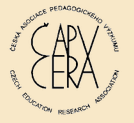About Czech Republic
The Czech Republic (/ˈtʃɛk rɨˈpʌblɪk/ CHEK-re-PUB-lik; Czech: Česká republika, pronounced [ˈt͡ʃɛskaː ˈrɛpuˌblɪka] ( ), short form Česko Czech pronunciation: [ˈt͡ʃɛsko]) is a landlocked country in Central Europe. The country is bordered by Germany to the west, Austria to the south, Slovakia to the south-east and Poland to the north-east. Prague is the capital and largest city, with 1.3 million residents. The Czech Republic includes the historical territories of Bohemia and Moravia, and Czech Silesia.
The Czech state, formerly known as Bohemia (Čechy), was formed in the late 9th century as the Duchy of Bohemia, at that time under the dominance of the powerful Great Moravian Empire. After the fall of the Empire in 907, the centre of power was transferred from Moravia to Bohemia under the Přemyslids. In 1004, the duchy was formally recognized as a part of the Holy Roman Empire, rising to the status of Kingdom of Bohemia in 1212. During the rule of the Přemyslids and their successors, the Luxembourgs, Bohemia expanded in size until reaching its greatest territorial extent in the 14th century. During the protestant reform-driven Hussite wars in the 15th century, the kingdom faced economic embargoes and defeated five crusades from the Catholic Church.
Following the Battle of Mohács in 1526, the Kingdom of Bohemia was gradually integrated into the Habsburg Monarchy as one of its three principal parts, alongside the Archduchy of Austria and the Kingdom of Hungary. The Bohemian Revolt (1618–20) against the catholic Habsburgs led to the Thirty Years' War, after which the monarchy consolidated its rule, re-imposed Catholicism, and adopted a policy of gradual Germanization. With the dissolution of the Holy Roman Empire in 1806, the Bohemian kingdom became part of the Austrian Empire. In the 19th century the Czech lands became the industrial powerhouse of the monarchy and the core of the Republic of Czechoslovakia, which was formed in 1918 following the collapse of the Austro-Hungarian Empire after World War I. After 1933, Czechoslovakia remained the only democracy in central Europe.
Following the Munich Agreement and the Polish annexation of Zaolzie, Czechoslovakia fell under German occupation during World War II. By 1945, a major portion of the country was liberated by the Red Army, and the subsequent gratitude towards the Soviets, combined with disillusionment with the West for failing to intervene, led the Communist Party of Czechoslovakia to victory in the 1946 elections. Following the 1948 coup d'état, Czechoslovakia became a single-party communist state under Soviet influence. In 1968, increasing dissatisfaction with the regime culminated in a reform movement known as the Prague Spring, which ended by with Soviet-led invasion. Czechoslovakia remained occupied until the 1989 Velvet Revolution, when the communist regime collapsed and a multiparty parliamentary republic was formed. On 1 January 1993, Czechoslovakia peacefully dissolved, with its constituent states becoming the independent states of the Czech Republic and Slovakia.
The Czech Republic is a developed country with advanced, high income economy and high living standards. The UN ranks the country 14th in the inequality-adjusted human development. The Czech Republic also ranks as the eleventh-most peaceful country, while achieving strong performance in democratic governance and infant mortality. It is a pluralist parliamentary representative democracy with membership in the European Union, NATO, the OECD, the OSCE, and the Council of Europe.

